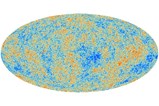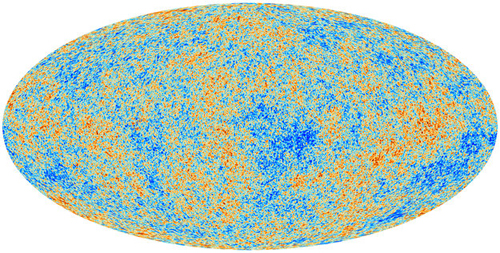Cosmic Microwave Background Anomalies Challenge Principles Of Big Bang Theory

By Ron Grunsby, editor
The European Space Agency (ESA) has released the most detailed map of the cosmic microwave background ever created, and there may be evidence of physics that took place before the Big Bang. The ESA’s findings call into question how much we really know about the formation of the universe.
This map is based on the first 15.5 months of data from the ESA’s Planck space telescope, which was launched in 2009 to investigate the origins of the universe. Planck uses two instruments to make measurements of the universe and can detect the first light ever produced. Its high-frequency instrument measures from 83 GHz to 1 THz and contains an array of 52 bolometric detectors operated at 0.1K. Its low-frequency instrument measures from 27 to 77 GHz and contains an array of 22 tuned radio receivers operated at 20K. The telescope features a 1.9 m × 1.5 m primary mirror with a 1.5 m projected aperture.

The anisotropies of the cosmic microwave background as observed by Planck. Image: ESA and the Planck Collaboration.
The radiations measured by Planck resulting from the Big Bang are called the cosmic microwave background. The cosmic microwave background shows the universe when it was just 380,000 years old (when photons were able to start moving freely) and indicates small temperature fluctuations that correspond to areas of slightly different densities, which can be considered the “seeds” of today’s stars and galaxies. The Planck telescope maps these fluctuations across the sky with better resolution and sensitivity than the two previous missions, which were launched by the United States. According to the standard model of cosmology, these fluctuations occurred immediately after the Big Bang and were stretched to cosmologically large scales during a short time of accelerated expansion known as inflation. The inflationary theory attempts to explain the expansion of the universe.
What concerns scientists is that Planck has found unexpected large-scale anomalies in the sky, including a large cold region, stronger fluctuations in one half of the sky than the other, and less light signal than expected across the entire sky. “If we see these strange patterns that are not expected in the simplest inflationary theories, it may be that we’ve been fooled ‑ that inflation didn’t happen,” said George Efstathiou, professor of astrophysics at the University of Cambridge. “It’s possible that there was some phase of the universe before the Big Bang happened where you can track the history of the universe to a pre-Big Bang period.”
The inflation theory was invented to explain why the temperature of the cosmic microwave background appeared to be uniform throughout the universe. Now that Planck has found the temperature is not as uniform as previously thought and it is possible that inflation may not have happened, a great deal of conversation will result. If it is determined that the Big Bang was not the beginning of space and time, it’s back to the drawing board for much of the cosmology community.
We want to know that you think. Please share your thoughts below.
